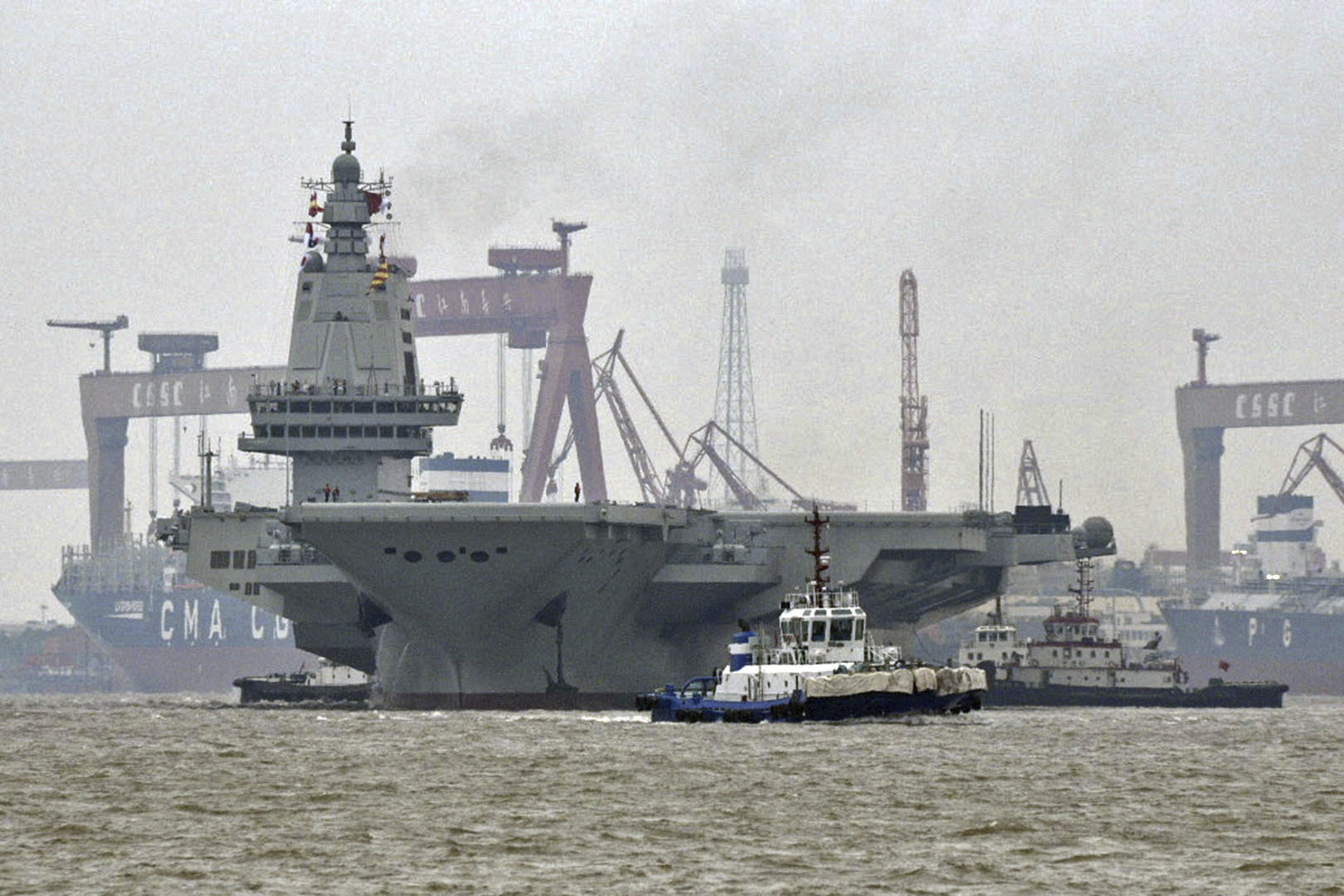China’s most-advanced but yet-to-be-commissioned aircraft carrier, CNS Fujian, returned to a shipyard on Tuesday following its seventh sea trial since its launch three years ago.
The Chinese military said last week that the sea trials of the Fujian are what it called “a normal arrangement” during the construction process of the aircraft carrier. The Chinese Defense Ministry did not immediately respond to Newsweek‘s request for comment.
Why It Matters
China’s sovereign claims in the South China Sea overlap with those of regional nations, including Vietnam and the Philippines, which are to the west and the east of the contested waters, respectively.
There have been growing confrontations between Chinese and Philippine forces in the South China Sea. These altercations have raised concerns that the United States, a longtime ally of the Philippines, could become involved in a potential conflict.
What To Know
China has the largest navy in the world by hull count, with over 370 ships and submarines, including three aircraft carriers. In addition to the Fujian, the Chinese navy operates CNS Liaoning and CNS Shandong, which are its first and second operational aircraft carriers.
The Fujian, which has a displacement of more than 80,000 tons in full load, features an advanced aircraft launching system with electromagnetic catapults, similar to the United States Gerald R. Ford-class aircraft carriers, enabling it to launch heavier combat aircraft.
According to photos circulated on social media, the Fujian was spotted returning to the Jiangnan Shipyard in Shanghai in eastern China. It left the shipyard for sea trials in mid-March, and satellite imagery later spotted it near the Bohai Sea in northeastern China.
One of the photos also shows suspected mock-ups of fighter aircraft on the Fujian‘s flight deck. The Chinese aircraft carrier fleet operates at least three types of fighter aircraft—the J-15, the J-15D, and the J-15T, with the latter two were officially unveiled last November.
In addition to the J-15 family of fighter aircraft, the Chinese navy has tested the nation’s next-generation fighter jet for aircraft-carrier operations, dubbed the J-35, to rival its U.S. counterpart, the F-35C. A full-scale J-35 mock-up was previously seen on the Liaoning.
While the Chinese military has yet to announce the commissioning date of the Fujian, the Pentagon‘s assessment report on Chinese military power said the warship, which began its first sea trial in May last year, “is expected to be operational in the first half of 2025.”
For comparison, the Liaoning conducted 10 sea trials in 13 months before being put into service in 2012, while the Shandong was commissioned in 2019 after nine sea trials over 18 months, the Center for Strategic and International Studies’ China Power Project said.
Kyodo via AP Images
Meanwhile, USS John F. Kennedy, the second ship of the Gerald R. Ford-class aircraft carriers, is scheduled for delivery in July. The third and the fourth ships, USS Enterprise and USS Doris Miller, are under construction for delivery in 2029 and 2032.
In January, then-U. S. President Joe Biden said the next two Gerald R. Ford-class nuclear-powered aircraft carriers will be named after former Presidents Bill Clinton and George W. Bush. The first ship of the class, USS Gerald R. Ford, has been serving since 2017.
The U.S. Navy has the world’s largest aircraft carrier fleet, with 11 warships currently in service. Besides the Gerald R. Ford, the rest of the aircraft carriers are the Nimitz-class.
What People Are Saying
The Center for Strategic and International Studies’ China Power Project said: “The Fujian‘s catapults are powered by an electromagnetic system similar to that of the U.S. Navy’s Gerald R. Ford-class carriers. This represents a leapfrogging past more conventional steam-powered catapults.”
The Pentagon’s Chinese military power assessment report read: “Fujian is … fitted with an electromagnetic catapult launch system. This design enables it to support additional fighter aircraft, fixed-wing early-warning aircraft, and more rapid flight operations, thus extending the reach and effectiveness of the [People’s Republic of China]’s carrier-based strike aircraft.”
What Happens Next
It remains to be seen whether China has commenced the construction of its fourth aircraft carrier, as it is working on a nuclear propulsion system for an aircraft carrier-sized warship. The Pentagon said it is expected that “additional” Chinese aircraft carriers will be built.

